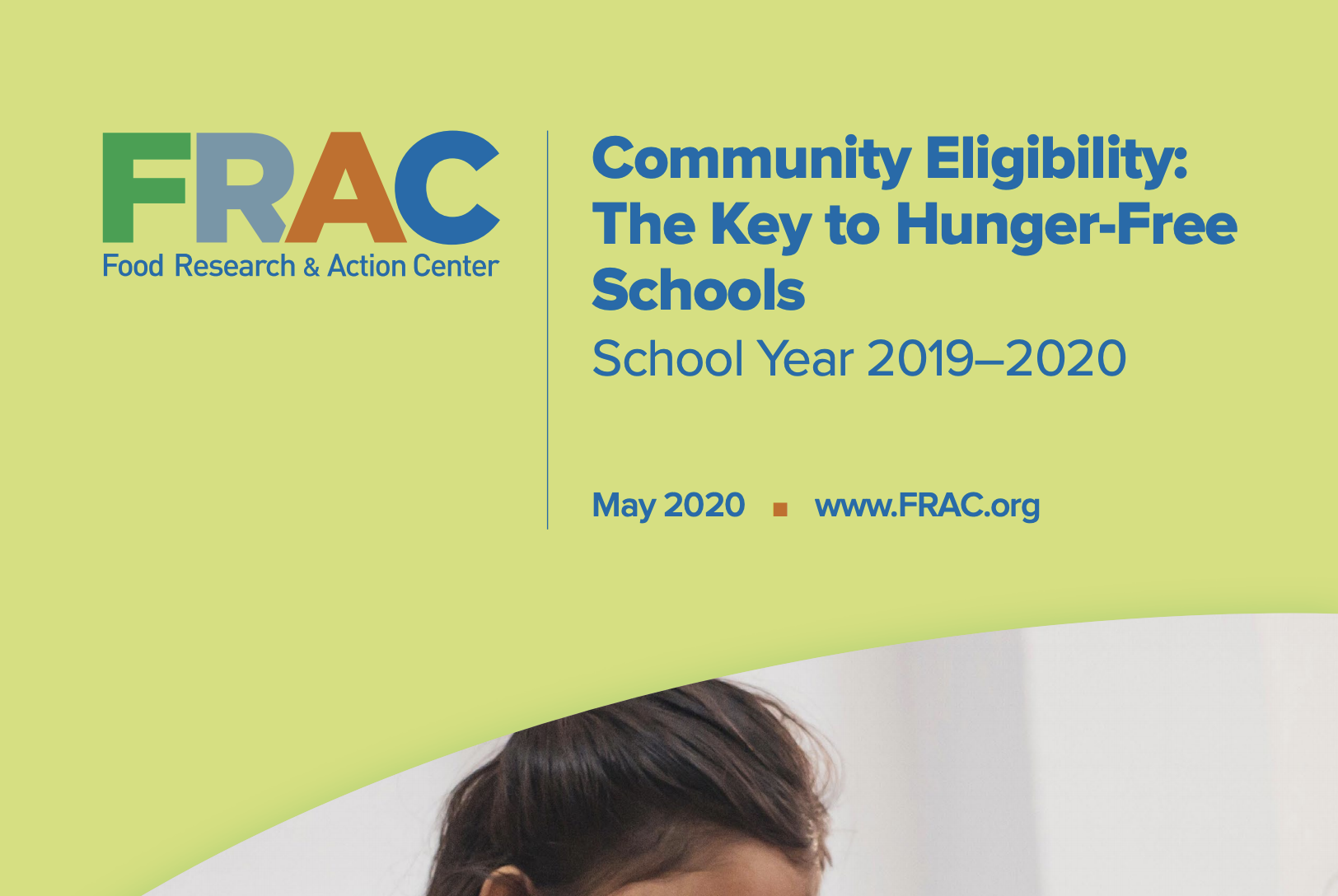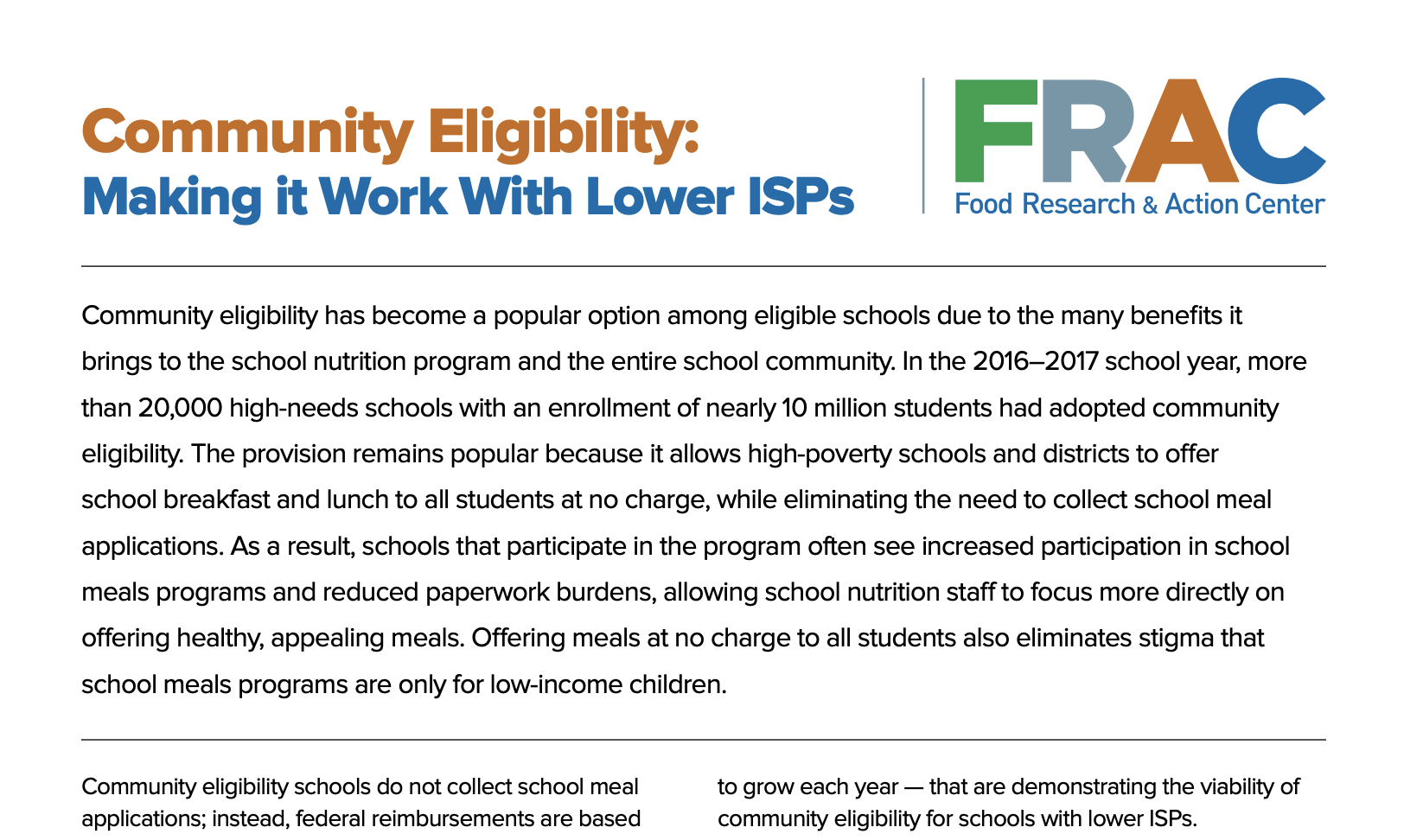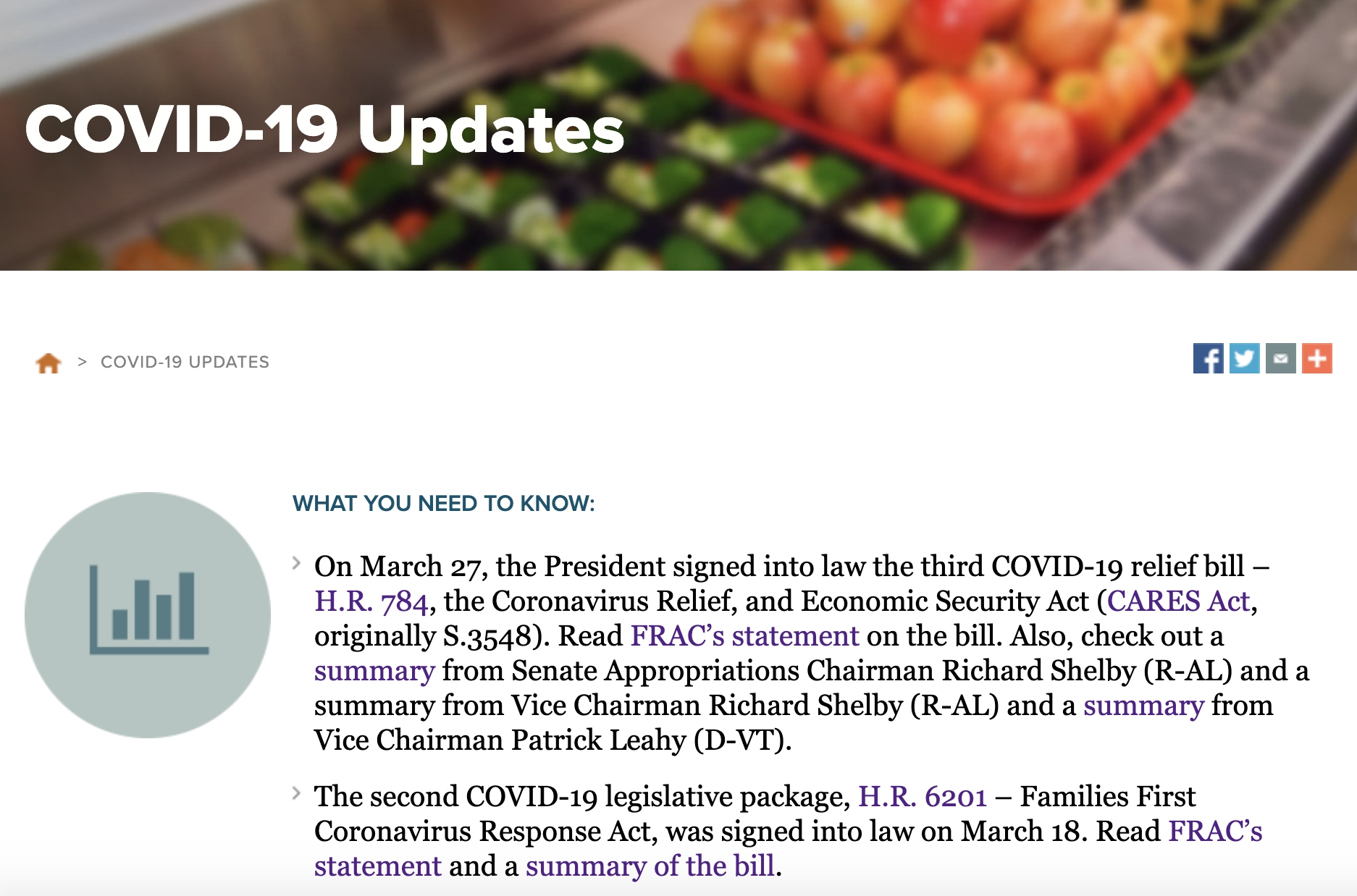What is the Community Eligibility Provision?
Community Eligibility Provision
The Community Eligibility Provision allows high-need schools to offer breakfast and lunch to all students at no charge and use significant administrative savings to offset any additional costs, over and above federal reimbursements, of serving free meals to all. Community eligibility increases participation in school breakfast and lunch, allowing more students to experience the educational and health benefits linked to participating in school meals.
What is Identified Student Percentage?
Identified Student Percentage or ISP is the measurement used to determine community eligibility. More information on how ISP is calculated can be found in the report here.
Key Findings for the 2019–2020 School Year
- School District ParticipationNationally, 5,133 school districts — 57.7 percent of those eligible — are now participating in the Community Eligibility Provision in one or more schools. This is an increase of 435 school districts since the 2018–2019 school year, when 4,698 school districts participated.
- School ParticipationIn the 2019–2020 school year, there are 30,667 schools participating in community eligibility, including schools from all 50 states and the District of Columbia. Overall school participation in community eligibility increased by 1,910 schools since the 2018–2019 school year. In the 2019–2020 school year, 69 percent of all eligible schools are participating in community eligibility nationally, with a median state take-up rate of 70.9 percent.
- Student EnrollmentIn the 2019–2020 school year, 14.9 million students are being offered free breakfast and lunch at school through the Community Eligibility Provision; this is up from 13.7 million in the 2018–2019 school year. California and Texas have the most children attend schools that are participating in community eligibility, approximately 1.9 million in each state. Nationally, nearly 1 in 4 students attending a school that is participating in community eligibility lives in California or Texas.
- School Participation by Poverty Level
Schools with identified student percentages (ISP) of 60 percent and above — those that receive the free reimbursement rate for 100 percent or nearly 100 percent of their meals — are more likely to participate in community eligibility than schools with lower identified student percentages. Nationally, 18,803 schools or 85 percent of all schools with ISPs of 60 percent and above are participating in community eligibility, well above the overall eligible school participation rate of 69 percent.
The number of schools implementing community eligibility with lower ISPs has grown each year as more school district understand the administrative savings of community eligibility and the impact of increased participation on school meal finances. In the 2019-2020 school year, 3,054 schools with ISPs between 40 and 50 percent (up from 2,114) and 8,679 schools between 50 and 60 percent (up from 7,797 schools) are implementing community eligibility. Read more about making Community Eligibility work with lower ISPs.
Expansion in the 2020-2021 School Year
Expansion in the 2020-2021 School Year
Because of the economic crisis being created by COVID-19, more schools and school districts will be eligible for community eligibility in the upcoming school year. With schools across the country closed and school nutrition departments still working hard to provide meals to their students at sites in their community, state leadership that provides additional support and guidance will be critical to allow these newly eligible school districts to adopt community eligibility.
Conclusion
The 30,667 participating schools understand the countless benefits that community eligibility provides to students and schools.
As the nation struggles to recover from the economic impact of COVID-19, community eligibility offers an important opportunity for schools to respond to the increased need among their students. With the growing number of families participating in the Supplemental Nutrition Assistance Program (SNAP) due to the economic crisis, more schools will be able to adopt community eligibility in the 2020-2021 school year.
Explore Below to Learn More and Spread the Word

CEP 2019-2020 Full Report
Read the report
CEP Database
See if your school is eligible!
Making CEP Work with Lower ISPs
Learn more here
CEP Communications Toolkit
Spread the word!
CEP 2018-2019
Read last year's report
COVID-19 Resources
Get the latest updates from FRAC
